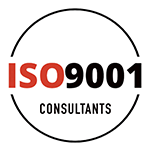Getting ISO 9001 certified might seem like a big job, but it doesn’t have to be difficult. This certification helps businesses show they meet international quality standards. It’s a sign of trust and reliability for customers. ISO 9001 gives you a framework to manage your processes better and improve your services. Let’s explore these steps to make the ISO 9001 certification process as easy as possible!
Understanding the Basics of ISO 9001 Certification
ISO 9001 certification is a globally recognised standard for quality management systems (QMS). It helps businesses ensure they consistently meet customer and regulatory requirements. Adopting ISO 9001 means your business is committed to quality and continual improvement.
The standard is built on several key principles, such as customer focus, leadership, engagement of people, and process approach. It also includes evidence-based decision making and relationship management. These principles guide businesses in setting up processes that lead to better performance and outcomes.
To get certified, a business must create a quality management system that aligns with ISO 9001 requirements. This involves documenting processes, procedures, and responsibilities. You need to show how your company meets the standard through records and proof of consistent quality control.
The certification process starts with understanding these basics and how they apply to your specific business operations. Knowing what ISO 9001 demands will make it easier to prepare and implement the necessary steps.
Preparing Your Organisation for ISO 9001
Getting your organisation ready for ISO 9001 certification involves several important steps. Start by gaining commitment from top management. Their support is crucial as it sets the tone for the rest of the organisation. Management should understand the benefits of ISO 9001 and be willing to allocate resources for its implementation.
Next, educate your staff about ISO 9001 and its importance. Everyone in the organisation should know their role in maintaining quality standards. Provide training sessions and workshops to ensure all employees are on the same page. This step helps build a culture that values quality and continuous improvement.
You should perform a gap analysis to identify where your current processes fall short of ISO 9001 requirements. This involves reviewing existing documentation and practices to pinpoint areas that need improvement. Use the findings to develop a detailed action plan for making the necessary changes.
Additionally, set clear goals and objectives for your quality management system. These should be in line with ISO 9001 principles and tailored to your business needs. Regularly monitor and measure progress towards these goals to ensure you’re on track.
Finally, create a timeline for implementing changes and achieving certification. Breaking down the process into manageable steps makes it less overwhelming and easier to manage. With proper preparation, your organisation will be well on its way to achieving ISO 9001 certification.
Steps to Implement ISO 9001 Standards
Implementing ISO 9001 standards involves several key steps. Start by creating a quality policy that outlines your commitment to quality and continuous improvement. This policy should be communicated throughout the organisation so everyone understands its importance.
Next, develop a detailed plan for implementing ISO 9001. This involves identifying the processes and procedures that need to be updated or created. Assign responsibilities to specific team members and set deadlines for each task. Clear planning ensures everyone knows what they need to do and when.
Documenting your processes is a critical part of ISO 9001 implementation. Create manuals, procedures, and records that show how your business meets the standards. This documentation serves as evidence during the certification audit and helps maintain consistent quality.
Involve your employees in the implementation process. Provide training and resources to help them understand the new systems and their roles in maintaining quality. Employee involvement leads to better engagement and ensures the success of the new practices.
Regularly monitor and review your processes to ensure they align with ISO 9001 requirements. Conduct internal audits to identify any areas for improvement. Use the findings to make necessary adjustments and enhance your quality management system continuously.
Passing the ISO 9001 Audit and Certification
The final step to achieving ISO 9001 certification is passing the audit. This process involves an external auditor evaluating your quality management system to ensure it meets the standards.
Prepare for the audit by conducting an internal review. This helps identify any gaps or issues that need to be addressed before the external audit. Ensure all documentation is up-to-date and accessible, and your employees are ready to demonstrate their understanding of the processes.
During the audit, the auditor will review your documentation and observe your processes in action. They will ask questions and seek evidence that your business follows ISO 9001 standards. Cooperation and transparency during the audit are crucial for a positive outcome.
After the audit, the auditor will provide a report detailing any non-conformities or areas for improvement. Addressing these points quickly and effectively is important. Once any issues are resolved, you will receive your ISO 9001 certification.
Maintaining your certification involves regular surveillance audits to ensure ongoing compliance. Continually improving your processes and staying committed to quality will help retain your certification and the benefits it brings.
ISO 9001 Certification: Easy Steps to Get Started
Achieving ISO 9001 certification is a valuable step for any business focused on quality and customer satisfaction. This certification shows your commitment to maintaining high standards and improving your processes. By understanding ISO 9001 basics, preparing your organisation, implementing the standards, and passing the audit, you can achieve this goal.
The process might seem complex, but breaking it down into manageable steps makes it easier. Start with a solid plan, involve your team, and stay committed to continuous improvement. These efforts will not only lead to certification but also bring long-term benefits in terms of efficiency, customer trust, and business reputation.
Ready to take the next step in your ISO 9001 certificate journey in Sydney? Contact ISO 9001 Consultants to guide you through the process from start to finish. Our experts are here to help you achieve certification smoothly and efficiently.








Users Comments
Get a
Quote